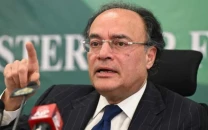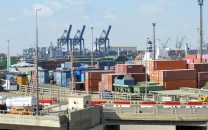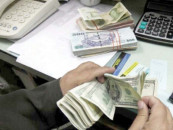Economic performance in 2024 and roadmap for 2025
Next year implementation of already finalised sector-specific reforms must be govt's top priority
1735506669-0/image-(16)1735506669-0-640x480.webp)
Pakistan's economy witnessed several positive developments this year. The country's default risk decreased by 93%, the current account reached a 10-year high, and November's inflation rate of 4.9% marked the lowest level since May 2018.
The State Bank cut its key policy rate by 900 basis points to 13% during 2024, bringing borrowing costs to their lowest level since April 2022. Moreover, the stock market emerged as one of the best performers globally, boosting investor confidence to its highest level in three years.
Despite these achievements, poverty rates remain alarmingly high at over 40%. The gross domestic product (GDP) growth rate, at 2.5%, remains the lowest in the South Asian region, where the average stands at 6.4%.
Similarly, GDP per capita, estimated at $1,587, falls significantly below the South Asian average of $2,303 and has yet to recover to its 2018 level of $1,684. With economic stabilisation achieved, the government must now prioritise sustainable growth and poverty reduction.
When the current government assumed power in March 2024, it appeared eager to undertake serious economic reforms to catch up with the region. To this end, it established task forces comprising leading local and international experts, assigning them tight deadlines to deliver their recommendations.
It also integrated the interim government's reform initiatives into its agenda. Within a few months, the government successfully finalised a comprehensive sectoral reform plan covering all economic ministries.
The plan was scheduled to be unveiled by the prime minister on August 14, 2024. However, its implementation has inexplicably stalled.
In addition to the sectoral plan, several other reforms were thoroughly debated and adopted for immediate implementation. Among these was the former finance minister's proposal to restructure the Federal Board of Revenue (FBR), which had not undergone significant reform in nearly a century.
The proposed changes aimed to modernise the FBR and make it more dynamic through three key measures: separating tax collection from fiscal policy, splitting customs and indirect taxes into independent entities, and establishing oversight boards to monitor performance. Unfortunately, this plan now appears to have been shelved. Another crucial reform, deemed essential by both multilateral organisations and major business groups, pertained to tax and tariff policies. To support the government in this effort, an independent team of leading economists and tax experts developed comprehensive proposals.
However, these recommendations were entirely disregarded in favour of additional regressive tax measures. As expected, these policies have not only stifled growth but have also led to lower tax collections, falling short of the FBR's six-month target by approximately Rs400 billion.
The government has also not been able to advance the interim government's ambitious plans for privatising loss-making state-owned enterprises (SOEs). The mismanagement of Pakistan International Airlines (PIA) privatisation efforts exemplifies this failure.
Similarly, no progress has been made towards the privatisation of Pakistan Steel Mills, which has been closed for a decade and has so far accrued losses exceeding Rs600 billion. By the end of this fiscal year, annual SOE losses are projected to surpass Rs1,000 billion.
Governments traditionally have a narrow window – typically the first two years of their term – to implement bold and transformative reforms. As elections draw closer, priorities tend to shift towards short-term political gains and populist measures, leaving little room for substantial, long-term initiatives.
To capitalise on this critical period, the government must break free from the "paralysis by analysis" mindset, which delays action under the guise of over-evaluation, and decisively advance its reform agenda before this window of opportunity closes.
In conclusion, 2024 brought prosperity to wealthier segments, particularly stock market investors, but offered minimal relief to the poorer majority. Although a decline in inflation rate provided some respite, regressive tax policies further exacerbated poverty levels.
As we move into 2025, the implementation of the sectoral reforms already finalised must be the government's top priority. At the very least, reforms related to tax and tariff policies, modernising the outdated FBR, and privatising loss-making state-owned enterprises – debated extensively during the government's first six months – must now move decisively towards implementation.
These measures are not just desirable; they are critical to fostering equitable and sustainable economic progress.
The writer is a senior fellow with the Pakistan Institute for Development Economics. Previously, he has served as Pakistan's ambassador to WTO and FAO's representative to the UN at Geneva



















COMMENTS
Comments are moderated and generally will be posted if they are on-topic and not abusive.
For more information, please see our Comments FAQ